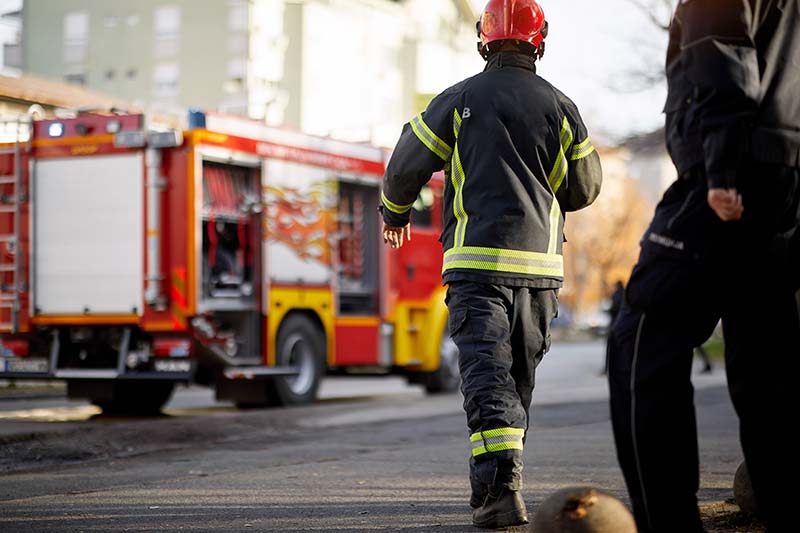Sir Ken Knight’s government-commissioned review into the future of England’s fire and rescue authorities (FRAs) has caused a stir among many members of the firefighting community.
The report, “Facing the Future,” says that FRAs need to be transformed to increase efficiency and effectiveness and reflect current risk and needs. It raises issues rather than making recommendations, and asks as many questions as it provides answers.
Key points:
- Deaths from fires in the home at an all-time low
- 40 percent fewer incidents than 10 years ago
- Expenditure and the number of firefighters remain much the same
- Huge variation in costs — some of England’s 46 FRAs cost twice as much to run as others, but there is little relationship between expenditure and outcomes
- Savings of GB pound 196 million per year could be made by higher-spending FRAs reducing their expenditures
- The number of on-call firefighters should be increased from 30 to 40 percent to save GB pound 123 million
- FRAs should share ideas and good practices to avoid duplication
- Greater leadership is needed to challenge FRAs to raise their game
- National action needs to be taken, but FRAs should not wait for this
- Having 46 separate FRAs is not sensible — local mergers could be an option
- A single fire service, like the one created in Scotland in April this year, could be formed in England
- Fire services could collaborate with the other emergency services
- There would be fewer full-time firefighters in a new fire service model
- The government has said the delivery of firefighting would not be privatized
- 80 percent of fire service costs are spent on staff
- Call-outs have fallen due to fire safety campaigns, improvements in technology, increased smoke alarm ownership, and government safety regulations on buildings and furniture
Sir Ken’s observations
A deeper dive into the minutiae of the report reveals some interesting opinions. Referring to his suggestion that FRAs should merge, Sir Ken said: “The 46 fire and rescue authorities, each with different governance structures, senior leaders, and organisational and operational quirks, does not make for a sensible delivery model.”
When talking about latent capacity in the deployment of resources, he says: “On average, each firefighter attends 110 incidents a year. False alarms now outnumber fires — 46 of the 110 incidents are false alarms, just 43 are fires.”
Operational collaboration drew the following: “The challenge for fire and rescue authorities is to accept that to achieve interoperability they all need to forgo an element of customisation.”
He said that the potential benefits of mutualizing services would be increasing efficiency and use of assets, as well as bringing in new revenue and opportunities.
However, Sir Ken added that part of the issue in helping the public get a satisfactory fire service is getting beyond the public’s relatively superficial view of the service.
“The public sees two extreme images of the fire service — saving lives in heroic situations or being chastised for rescuing squirrels,” he said. “This detracts from any debate about whether resources should be focused on prevention or response, and whether a fire station needs to be kept crewed full-time if it only has 100 calls a year.”
Knight told the BBC that cutting firefighter numbers could be justified, saying that the number of fire deaths in the home that occurred when he was a firefighter was 700 or 800 a year, compared to 180 a year now.
“It’s a really good news story,” he said, “but the service itself must adapt and change, not only to maintain that fire safety and prevention front, but to adapt its service.”
He asked why the number of firefighters has remained broadly the same, even though there are now 40 percent fewer fires. “It’s a question that the local authorities and fire authorities will need to address and need to answer.”
The report says the massive reduction in fires in the last decade “suggests that there is room for reconfiguration and efficiencies to better match the service to the current risk and response context.”
Related posts:
- Privatisation Plans Causing Controversy
- London Fire Closures Under Consultation
- Is Saving Cats a Good Use of a Fire Crew’s Time?
2023 Fire Safety eBook – Grab your free copy!
Download the Fire Safety in 2023 eBook, keeping you up to date with the biggest news and prosecution stories from around the industry. Chapters include important updates such as the Fire Safety (England) Regulations 2022 and an overview of the new British Standard for the digital management of fire safety information.
Plus, we explore the growing risks of lithium-ion battery fires and hear from experts in disability evacuation and social housing.

